|
1975 - Chalk and changes
Prior to 1975 five runway directions were in use regularly at Denham, the whole of the grass surface being available for take offs and landings depending on the wind direction. This helped spread the wear and tear over the whole of the aerodrome. The airfield's position within the Heathrow Control Zone and the needs of commercial aviation meant that stricter procedures needed to be established for arrivals and departures from Denham, as well as for traffic in the circuit. An additional concern was traffic noise affecting the neighbours. The longest available distance across the airfield meant aircraft flew past local dwellings, so a different direction with a slightly shorter distance was chosen for the new main runway to reduce noise to the residents there. This runway was aligned 070 and 250 degrees, so was known as 07/25 and clearly marked in the grass using chalk. The flarepath installed in 1963 was moved to align with this to assist aircraft landing at night and in poor weather.
|
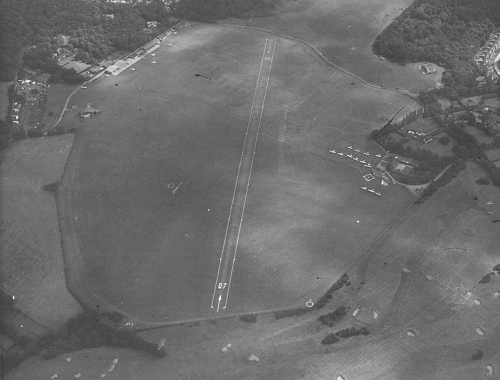
The main runway, 07/25, was clearly marked with chalk in 1975.
|
The biggest change at Denham in 1975 began when the Medminster Group decided to rationalise their aviation businesses and concentrate on Biggin Hill and helicopters. They kept the Air Gregory helicopter school and charter business at Denham, still managed by Air Commodore Barrett, but decided to sell the Gregory School of Flying. Initially they had intended keeping two fixed wing aircraft to maintain the air charter business, but later elected to sell this as well. Their fixed wing flying school based at Denham found a ready buyer on 14 March in the person of a local businessman, Tom Howard. Howard had learned to fly in the RAF prior to the Second World War before building a successful company dealing in gravel and aggregates for the construction industry in the post war years, and had purchased a gravel pit near to Denham from local gravel merchant W G Boyer. Howard began flying again privately in 1971 after attending an airshow that rekindled his passion for flight and this love of aviation naturally attracted him to the aerodrome where he became a part time flying instructor with Air Gregory. When he heard that the school was up for sale he decided to purchase it to diversify his business interests. The following year, he also purchased the air charter company from Air Gregory, taking over the two Aztecs operated by them.
|

Tom Howard, standing to the right, shows a group of local school children the signal square and explains what the symbols mean to pilots. Despite his other business pressures, Tom took a personal interest in the school and charter companies, and was often to be found at the aerodrome.
|
Both organisations were renamed, the school becoming the Denham Flying Training School, the charter company becoming Denham Air Taxi Services Ltd. The Air Gregory logos and colour schemes were maintained on the aircraft, only the company names were changed to reflect the new owners, as repainting the nine aircraft would have been a costly business.
|
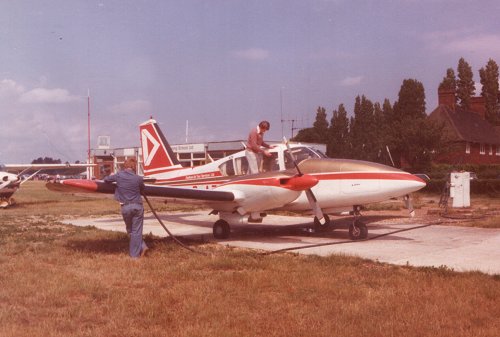
With the Denham Air Taxi Services Ltd name the only change to its colour scheme, Piper PA-23 Aztec G-AZYU is refuelled at the south side pump at Denham.
|
Aside from the colour scheme, Howard also retained the staff of the school and charter businesses, keeping their experience and many of their customers, particularly with the flying school where instructors had built up a rapport with their students. The only major change was that he installed his his daughter to run the new companies for him as day to day manager, as the Air Gregory team were still involved with the helicopter business. Interestingly, Howard himself remained one of the part-time instructors at the school, aside from returning to flying in 1971 he had gained his civilian instructor rating in 1973.
|
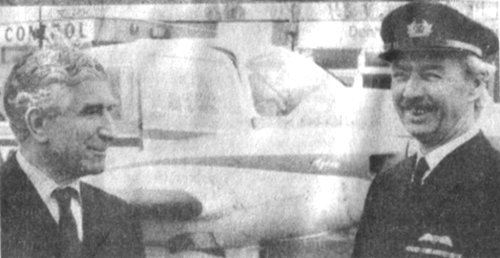
Tom Howard, left, retained the experienced staff in the flying school and charter companies, such as Rex Ainsworth, right, who had been the operations manager and chief pilot of the former Air Gregory fixed wing organisations.
|
A number of other pilots at Denham were making their names in various ways during 1975, not least of which was Brian Lecomber, who had been an instuctor and flying circus pilot at Denham before moving to Antigua to take up an instructing job over in the West Indies. Once there he found time to finish his first novel, "Turn Killer", returning to the UK in 1975 to find a publisher. He had begun writing the book in 1969, but his time in the West Indies changed the story dramatically and resulted in a complete re-write. The first book was a top ten best seller and led to two further novels, "Dead Weight" in 1976 and "Talk Down" in 1978, both equally successful and remain amongst the best flying novels ever written. Brian returned to Denham while working on the books, instructing at the new Denham Flying Training School before later joining the Rothmans Aerobatic Team, an outlet for his love of aerobatics. He will return to our story later as he was to form his own aerobatic company and base it at the aerodrome.
|
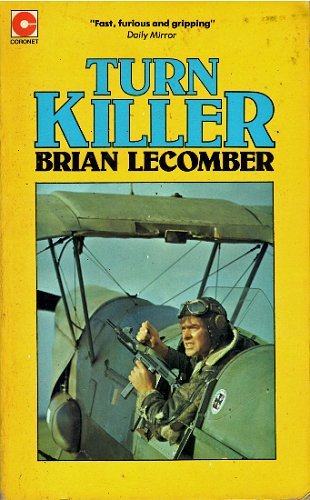
Brian Lecomber's first book was initially published by Coronet in 1975.
|
As mentioned in 1974, Ralph Burridge, a pilot based at Denham with his Piper Cherokee Six G-ATES, was a member of Wing, a network of private and club pilots who carried out mercy flights, such as delivering organs for transplant to hospitals all over the country. Burridge was also an ex-Scout and was still involved in the Scouting movement, so when he heard of a Scout Rally being held in his home town of Chalfont St Peter he invited groups of scouts from the various Bucks and Middlesex Scout Troops at the Rally to come flying at Denham. During the day Burridge flew four groups of Scouts, his intention being to encourage air-mindedness in the youth movement.
|
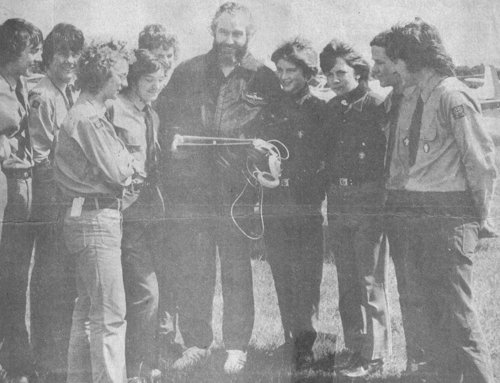
Ralph Burridge with some of the Scouts he took flying in his Piper Cherokee Six, G-ATES.
|
Britain's first female commercial helicopter pilot, Gay Absolem, was still flying at Denham for Air Gregory in a variety of roles, not just in passenger and cargo flying. Air Gregory had offered a prize of a helicopter flight in 1975 and Gay was the pilot for the flight on 2 January. The winner, Mrs Giddins, elected to let her daughters Clair and Susan have the flight, as it was Susan's sixth birthday. Gay Absolom would shortly marry the director of Air Gregory's helicopter arm, Air Commodore F O "Barry" Barrett, and would live locally, remaining involved in flying at Denham for many years.
|
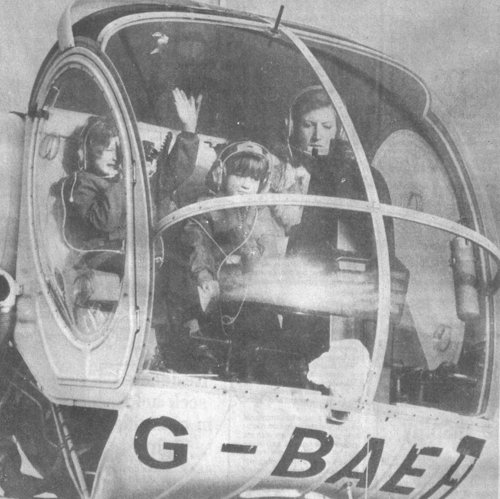
Gay Absolom took 8 year old Clair Giddins and her six year old sister Susan on their prize helicopter flight in January.
|
One of the ambitions of many light aircraft pilots is to land at a major airport, and in June, two Denham pilots made this a reality. Steve Lyons, a member of the Denham Flying Training School, and John Heathcote, one of the instructors, got permission to fly into Heathrow in one of the school's Cessna 150 trainers. The flight was exciting for more than one reason, as after landing the aircraft was approached by members of the airport security team who had not been informed of the flight. This was quickly sorted out and the two pilots were given a tour of the airport's air side, not a view of Heathrow many people get to have. Mixing with the much larger airliners was; "Like going to Wembley on Cup Final day" said Steve. The landing fee for the endeavour was £13.80p, a small price to pay for an unforgettable experience.
|
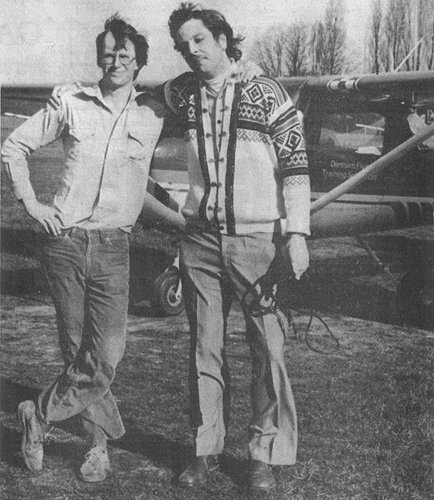
Steve Lyons and John Heathcote with the Denham Flying Training School Cessna 150 they flew into Heathrow.
|
The Guild of Air Pilots and Navigators (GAPAN) returned to the aerodrome on 15 June to hold their 1975 Garden Party, again hosted and organised by the extraordinary Ron Gillman, a former Master of the Guild himself. The air display included a wide variety of vintage and modern aircraft, including aerobatic displays by Tony Bianchi and British Aerobatics Champion Neil Williams. New school owner Tom Howard was delighted to have the opportunity to assist the Guild and made the Denham Flying Training School facilities available to them for the day. The display commemorated the 50th Anniversary of Sir Alan Cobham's 1925 flight to the Cape of South Africa and back, and included a de Havilland dH.60 Moth of the same type Cobham had used on this record setting flight. As well as the aircraft, many of which came from the Tiger Club, a regular participant in the Denham displays, the day was graced by the Bentley Owner's Club, with 48 of the magnificent and rare cars arrayed on the aerodrome.
|
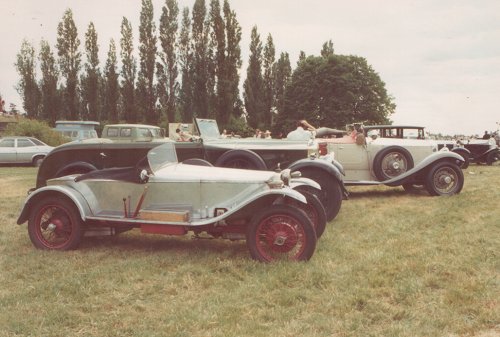
Some of the 48 vintage Bentleys that graced the aerodrome for the 1975 GAPAN display.
|
|

The Bentley cars included tourers alongside rare racing and rallying versions of the illustrious marque.
|
|
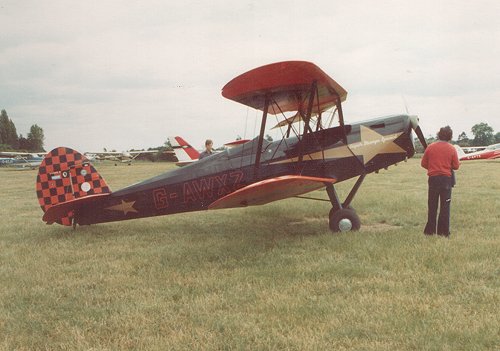
Tony Bianchi flew an aerobatic display in his Stampe SV4C at the 1975 GAPAN display. This aircraft is still owned by Bianchi Film Services today.
|
|
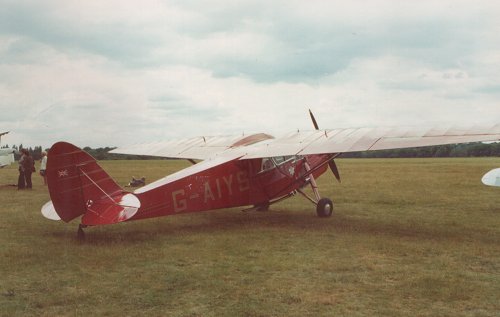
The 1975 display commemorated the 50th Anniversary of Sir Alan Cobham's 1925 flight to the Cape of South Africa in a dH.60, so included a great many versions of the de Havilland Moth family, including this immaculate dH.85 Leopard Moth.
|
|
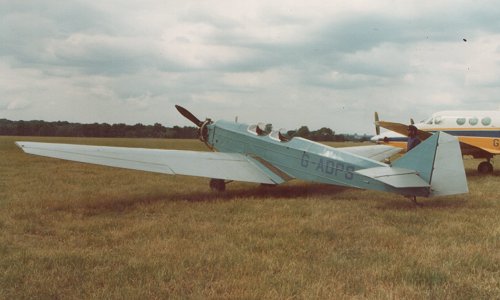
The GAPAN air shows always attracted rare visitors and the 1975 display was no exception with such aircraft as this rare BA Swallow II of 1935.
|
1975 was to see a great deal of change in the organisations at the aerodrome, but more and dramitic changes to the aerodrome were to come in this decade, as will be related next.
|
|

